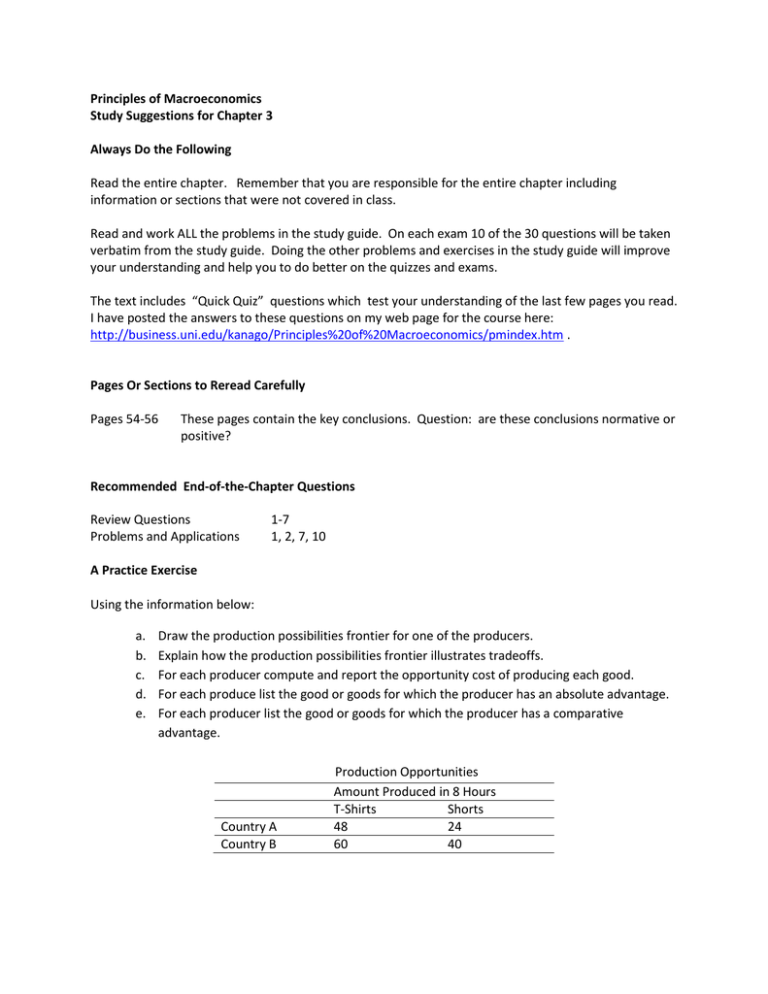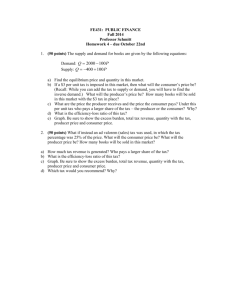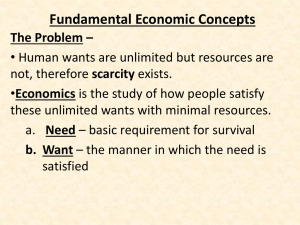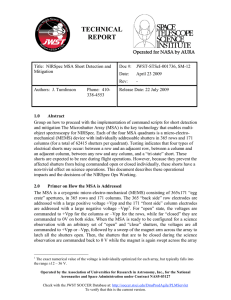Chapter 3 Study Suggestions
advertisement

Principles of Macroeconomics Study Suggestions for Chapter 3 Always Do the Following Read the entire chapter. Remember that you are responsible for the entire chapter including information or sections that were not covered in class. Read and work ALL the problems in the study guide. On each exam 10 of the 30 questions will be taken verbatim from the study guide. Doing the other problems and exercises in the study guide will improve your understanding and help you to do better on the quizzes and exams. The text includes “Quick Quiz” questions which test your understanding of the last few pages you read. I have posted the answers to these questions on my web page for the course here: http://business.uni.edu/kanago/Principles%20of%20Macroeconomics/pmindex.htm . Pages Or Sections to Reread Carefully Pages 54-56 These pages contain the key conclusions. Question: are these conclusions normative or positive? Recommended End-of-the-Chapter Questions Review Questions Problems and Applications 1-7 1, 2, 7, 10 A Practice Exercise Using the information below: a. b. c. d. e. Draw the production possibilities frontier for one of the producers. Explain how the production possibilities frontier illustrates tradeoffs. For each producer compute and report the opportunity cost of producing each good. For each produce list the good or goods for which the producer has an absolute advantage. For each producer list the good or goods for which the producer has a comparative advantage. Country A Country B Production Opportunities Amount Produced in 8 Hours T-Shirts Shorts 48 24 60 40 Computing Opportunity Cost Assuming that the production possibility frontier curve is linear as in this chapter and If there are only two goods, A and B, the opportunity cost of good A can be computed as: units of good B produced in x hours/units of good A produced in x hours. This number equals the number of units of good B given up per unit of good A produced. Equivalently we can find how much time it takes to produce a unit of good A, and then compute how much of good B could have been produced in that time. For example if it takes 10 minutes to produce a t-shirt and 20 minutes to produce a pair of shorts, then the ten minutes spent making one t-shirt would have been enough to produce 1/2 pair of shorts. So the opportunity cost of good A can be computed as: time to produce 1 unit of good A/ time to produce one unit of good B. These ways of computing opportunity costs are equal because units of good B produced in x hours/units of good A produced in x hours = (units of good B produced in x hours/x hours)/(units of good A produced in x hours/x hours) = (x hours/units of good A produced in x hours)/(x hours/units of good B produced in x hours) = hours to produce 1 unit of good A/hours to produce one unit of good B.








